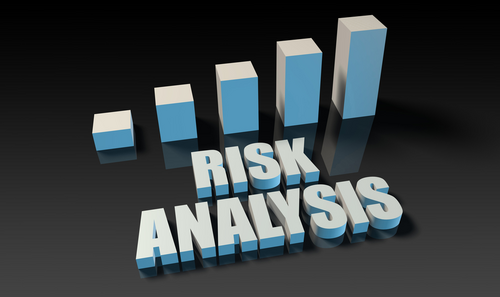With the rampant growth of cyber crimes, it has become hard for organizations to do away with risk analysis methods. Each of these methods is a variation in devising the same fundamental steps for evaluating possible threats. A beforehand assessment of the risk helps an enterprise to minimize its impact when met with it all of a sudden.
What are the possible causes of risks?
- Inadequate optimal efficiency
- Firewall vulnerabilities left untreated
- Use of unsafe applications, and cyber malpractices

Jump ahead to
A Look At The Two Broad Categories Of Risk Analysis Methods
Risk management professionals are in huge demand by organizations these days. To unleash the secret behind it one must go through the techniques they adopt for detecting threats. The techniques may be multiple but applying the right one in the right situation is the job of a professional.
He/she knows which of the given methods is most effective on a specific project. Risk analyzing techniques belong to two vast categories which are namely, quantitative and qualitative. Organizations utilize qualitative methods for a daily assessment of the threats likely to be faced. Quantitative methods intertwine the qualitative methods by offering numerical estimates as the after-effect of the threats occurring in the past.
A sneak peek of the top risk analysis methods is right here.
Delphi
In simple words, the Delphi technique is an alternative to the brainstorming session. In this process, the conducting team collaborates with security specialists and risk analysts. Together they identify every possible vulnerability to their project as well as organization. The involvement of highly skilled professionals distinguishes Delphi from regular brainstorming sessions. Hence, lies the need for risk management professionals to ensure that the method is fruitful and yields the desired results. This technique is essential for creating the risk register which requires a listing of the identified risks.
Consequence matrix
An analysis of vulnerabilities and their corresponding impacts comprises the consequence and probability matrix technique. This method leads to the precise calculation of risk impacts thereby, helping organizations in risk prioritization. Professionals can formulate the exact risk mitigation plans based on the results derived from the resultant list of probabilities and consequences.
SWIFT analysis
This technique is used to detect the scope of risks related to any changes in project execution as against the initial project plan. With the help of SWIFT, analysis professionals determine if the operational changes would give rise to new vulnerabilities. This assessment is crucial in deciding if any shift from the usual project plan is at all welcome.
Bow-Tie analysis
It involves a simpler and more practical arrangement of risk probabilities and their respective consequences. The task of identifying both these aspects is distributed within the team. One-half of the team focuses on incidents while the other on outcomes.
Fly analysis
This method is a categorization of risk outcomes and causes. Streamlining the solutions gets way easier than the above methods by listing each cause along with its consequence. One can effortlessly conclude Individual solutions for every cause-consequence pair.
These are the qualitative measures of risk analysis that pay heed to the quality, schedule, and costs of the project. They assist risk management professionals in emphasizing the risks that call for prime attention. Such risk analysis methods also appear to be cost-effective. On the other hand, there are certain quantitative techniques too. These are as follows:
Monte carlo simulation
This simulation procedure involves the mathematical calculation of risk probabilities. Multiple random experiences are conducted in this method.
Decision tree analysis
This technique is used in the case of the uncertainty of the risk evaluation result. It involves working out the best solutions for the worst of situations.
Sensitivity analysis
A mathematical description of the functional relationship between initial and final data is used in this type of analysis. It proves that even minor changes in the usual project data input can make a difference.
Which Steps Form The Basis Of Risk Analysis
Given below are a few steps with the help of which any risk analysis technique functions.
- The foremost step is to identify vulnerabilities and threats.
- To delve deep into the understanding of the repercussions of the detected risks.
- Creation of risk analysis models.
- Simulation of the models for better understanding of uncertainties.
- Assessment of the simulation results.
- Implementation of the model that suits a project best
To Conclude:
No stone is left unturned, in the course of this risk analysis method. Risk management professionals visit every possible circumstance that can induce both external and internal threats to an organization. Risk management professionals with PMI RMP Certification take a wide array of risk possibilities into account to reach effective conclusions. Several outcomes are at one’s disposal to analyze the proficiency of different risk management decisions taken.



